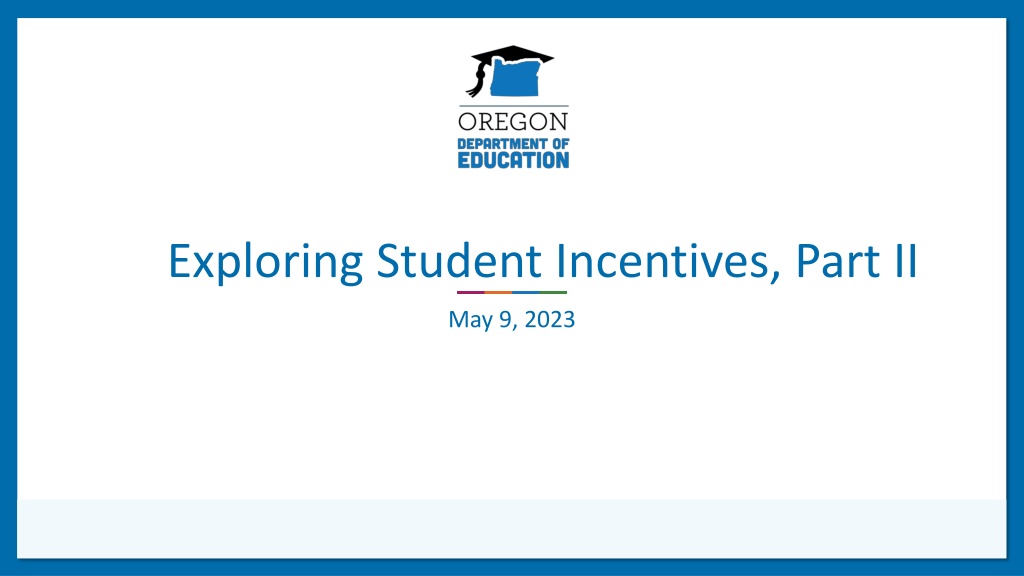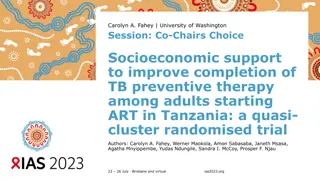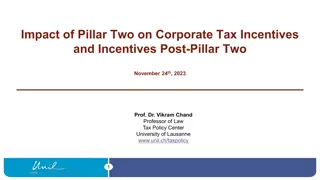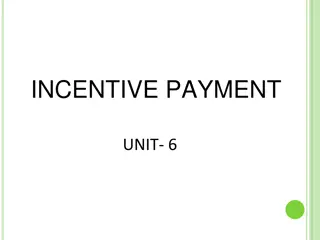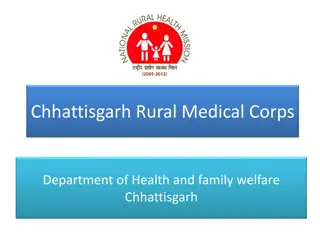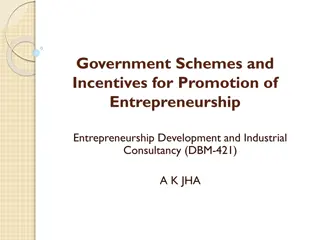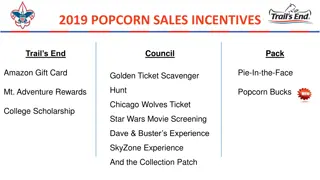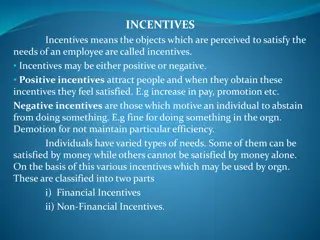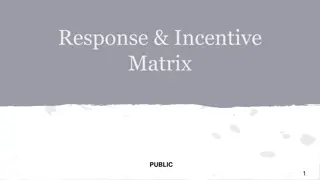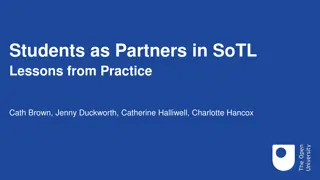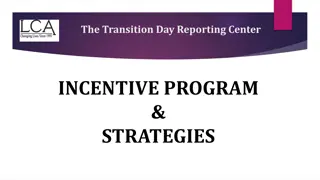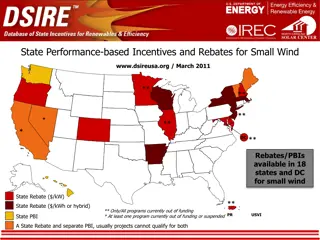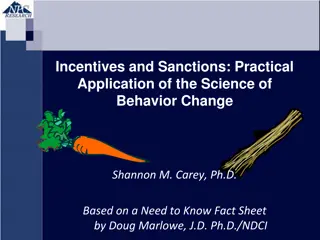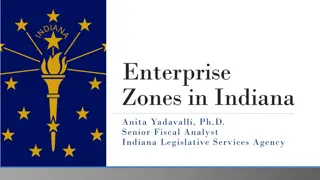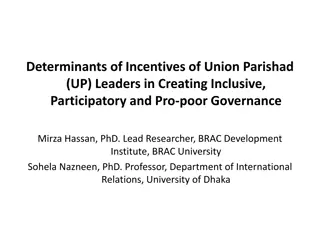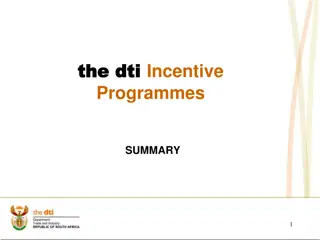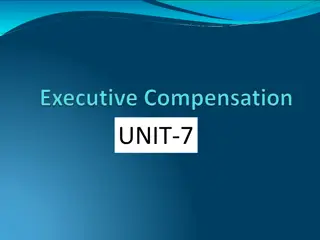Understanding Student Incentives and Guidelines for Effective Implementation
Delve into the world of student incentives, exploring how they can enhance outcomes when used strategically. Discover the rules governing the use of Title I funds for rewards, considerations for determining the allowability of initiatives, and key factors like necessary, reasonable, and allocable costs. Uncover insights on how incentives can align with school goals, assess their effectiveness, and make informed decisions on selecting appropriate incentives.
Download Presentation

Please find below an Image/Link to download the presentation.
The content on the website is provided AS IS for your information and personal use only. It may not be sold, licensed, or shared on other websites without obtaining consent from the author. Download presentation by click this link. If you encounter any issues during the download, it is possible that the publisher has removed the file from their server.
E N D
Presentation Transcript
Exploring Student Incentives, Part II May 9, 2023
Agenda for Todays Session Recap of April 18thStudent Incentives Discussion Questions to Consider Sample Scenarios GOAL: Build Oregon s incentive guidance together Oregon Department of Education 2
What we know for sure: Incentives can improve student outcomes when strategically used Allowable = Necessary + Reasonable + Allocable Communication from USED April 18th Recap Things that are less clear: Food Entertainment Determining what is reasonable Oregon Department of Education 3
Student Incentives: What the USED says Letter to Anderson (January 2008) Question: What are the rules governing the use of Title I funds for rewards and incentives? How can a district judge whether a particular initiative is allowable? USDE s Response: May reward for effort and achievement, not participation Must be nominal and non-monetary May not be entertainment May not be used to pay students stipends or provide an award for attendance Oregon Department of Education 4
Necessary: Is the cost needed for the operation of the program? What does your needs assessment and plan say? Allowable = Reasonable: Does the purchase exceed the cost of what a prudent person would incur? Headline test and Cost/Benefit Analysis Allocable: Does it serve the purpose of the program? Is the cost permissible under federal, district, state, and local policies? Oregon Department of Education 5
Necessary & Allocable: Questions to Consider What in our needs assessment got us here? What are the goals in our school plan? How do student incentives help us achieve those goals? How will we know if the incentives are working? Oregon Department of Education 6
Reasonable: Questions to Consider Why did we pick these particular incentives? How many students would benefit from this expenditure? What is the cost of this item in comparison to the overall budget? Would this pass the headline test? Oregon Department of Education 7
Is the request necessary, reasonable, and allocable? Scenario Questions What is a strength of this idea? What concerns do you have about this idea? Is more information needed to make a decision? Oregon Department of Education 8
Scenario 1: Tablet Raffle Apple Elementary School wants to purchase multiple tablets (e.g. Samsung, Kindle type device) for an attendance incentive All students with perfect attendance during the school year are entered into a drawing 1 student from each classroom with perfect attendance wins the tablet $100 per tablet 15 classrooms Total cost: $1500 Oregon Department of Education 9
Scenario 2: Incentives Store Ball Elementary School has an established PBIS system and is looking to replenish their incentive store. Student council has selected a variety of items of interest for students to buy. Per the budget narrative, the school s budget for supplies/materials is $20,000 $5,000 of the supply is spent on student incentives Each item costs between $1 and $10 Oregon Department of Education 10
Scenario 3: 8th Grade Graduation Trip All graduating 8th graders at Cat Middle School are going to the movies! Federal funds pay for tickets, popcorn and soda for each student as well as transportation to the theatre Celebrating moving to high school Oregon Department of Education 11
Key Takeaways & Next Steps When using federal funds, ensure incentives are Necessary, Reasonable, and Allocable Consider other funding sources District policies, needs assessment, and school plans help drive decisions ODE s Next Step: Create a draft brief for feedback Oregon Department of Education 12
Regional Contacts by ESD Amy Tidwell o Grant, Harney, High Desert, InterMountain, Jefferson, North Central and Region 18 Jen Engberg Clackamas, Columbia Gorge, Multnomah and Northwest Regional Lisa Plumb Lane, Linn Benton Lincoln and Willamette Sarah Martin Douglas, Lake, Malheur, South Coast and Southern Oregon Oregon Department of Education 13
Please reach out! Amy Tidwell amy.tidwell@ode.oregon.gov Jen Engberg jennifer.engberg@ode.oregon.gov Lisa Plumb lisa.plumb@ode.oregon.gov Sarah Martin sarah.martin@ode.oregon.gov Oregon Department of Education 14
